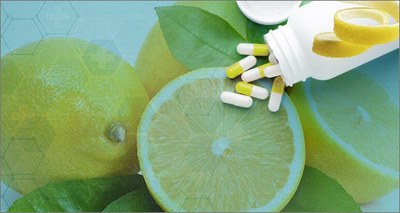Health: Lemon waste-derived supplements and nutraceuticals to counteract cardio-vascular risk
29/4/2021
 ENEA, jointly with the Sicilian companies Navhetec srl and Agrumaria Corleone spa, has patented an innovative method to transform the residual material after lemon processing into supplements and nutraceuticals for the prevention of diseases such as obesity, diabetes, hypercholesterolemia and cardio-vascular disorders.
ENEA, jointly with the Sicilian companies Navhetec srl and Agrumaria Corleone spa, has patented an innovative method to transform the residual material after lemon processing into supplements and nutraceuticals for the prevention of diseases such as obesity, diabetes, hypercholesterolemia and cardio-vascular disorders.
The innovation is based on 'membrane separation' technology, developed by ENEA, combined with subsequent encapsulation and drying phases using spray-drying technology: in this way nanovesicles, extremely small spheres rich in bioactive compounds such as nucleic acids, polyphenols, lipids and proteins, are derived from lemon waste processing .
Some in vivo and in vitro studies conducted by Navhetec already in 2015 showed significant tumor growth-inhibitory effects, while ongoing studies highlight its anti-inflammatory properties. Furthermore, in 2019, following trial of the patented method on healthy volunteers, a reduction in some cardiovascular risk factors, such as LDL-cholesterol and waist circumference, emerged.
The method is also applicable to other vegetable matrices and allows to obtain a product easy to dose and use, with high stability and shelf life, easily transferable to an industrial scale, reducing production costs and times compared to traditional ultracentrifugation techniques.
"The patented method, also useful for the formulation of foods and beverages with nutraceutical properties, is inspired by the zero waste philosophy and can fulfill both environmental and economic needs, linked on the one hand to the reduction of disposal costs and on the other hand to the transformation of agro-industrial waste into bioproducts with high added value ”, Paola Sangiorgio, researcher at the Bioproducts and Bioprocesses Laboratory of the ENEA Trisaia Research Center, pointed out.
The initiative is part of the R&D activities ENEA conducts for the improvement and sustainability of production processes and the application of the circular economy through the use of agri-food waste to obtain new materials and intermediates in food and non-food sectors.
For more information please contact:
- Paola Sangiorgio – ENEA, Bioproducts and Bioprocesses Laboratory, paola.sangiorgio@enea.it
- Daniele Pizzichini – ENEA, Bioproducts and Bioprocesses Laboratory, daniele.pizzichini@enea.it
- Gian Paolo Leone – ENEA, Bioproducts and Bioprocesses Laboratory gianpaolo.leone@enea.it
- Stefania Raimondo, Alice Conigliaro, Riccardo Alessandro - Navhetec s.r.l., info@navhetec.com
